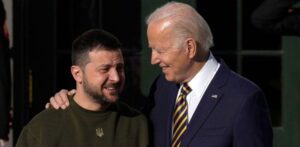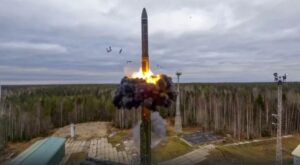The latest United Nations report on Yemen’s Houthi rebels reveals an alarming evolution: what began as a localized insurgent group has transformed into a significant regional military force with advanced weaponry and extensive backing from Iran, Hezbollah, and other key allies.
This transformation, occurring against a tense Middle East landscape backdrop, raises questions about Iran’s expanding influence and the complex alliances that keep reshaping the region’s conflicts.
As we approach another US presidential election, the stakes are particularly high for Washington, Tehran, and all players entangled in this unfolding drama.
Let’s take a closer look.
Houthis Rise: Local Fighters to Regional Powerhouse
The Houthis were initially a local armed group engaged in a civil war within Yemen with the main goal of controlling the northern region and pushing back against the Saudi-led coalition supporting the country’s internationally recognized government.
But over the years, they’ve transformed dramatically.
According to the UN report, the Houthis now boast around 350,000 fighters—up from only 30,000 in 2015—and possess sophisticated ballistic missiles, drones, air defense systems, and other advanced military assets.
“The panel observes the transformation of the Houthis from a localized armed group with limited capabilities to a powerful military organization, extending their operational capabilities well beyond the territories under their control,” the UN experts reported.
The latest United Nations report on Yemen’s Houthi rebels reveals an alarming evolution: what began as a localized insurgent group has transformed into a significant regional military force with advanced weaponry and extensive backing from Iran, Hezbollah, and other key allies.
This transformation, occurring against a tense Middle East landscape backdrop, raises questions about Iran’s expanding influence and the complex alliances that keep reshaping the region’s conflicts.
As we approach another US presidential election, the stakes are particularly high for Washington, Tehran, and all players entangled in this unfolding drama.
Let’s take a closer look.
Houthis Rise: Local Fighters to Regional Powerhouse
The Houthis were initially a local armed group engaged in a civil war within Yemen with the main goal of controlling the northern region and pushing back against the Saudi-led coalition supporting the country’s internationally recognized government.
But over the years, they’ve transformed dramatically.
According to the UN report, the Houthis now boast around 350,000 fighters—up from only 30,000 in 2015—and possess sophisticated ballistic missiles, drones, air defense systems, and other advanced military assets.
“The panel observes the transformation of the Houthis from a localized armed group with limited capabilities to a powerful military organization, extending their operational capabilities well beyond the territories under their control,” the UN experts reported.
These assets likely come from Iran’s Revolutionary Guard, Hezbollah, and other Iranian allies, marking a substantial upgrade in the Houthis’ military capabilities.
Yemen’s Houthis Flex New Muscle
As the Houthis have gained firepower, they’ve expanded their reach far beyond Yemen. Today, they’ve shifted from a primarily land-focused group to one that poses a major sea threat.
Houthi rebels now attack commercial vessels in the Red Sea and the Gulf of Aden—a strategic waterway for global trade—and have shown the world just how far they’ve come.
These attacks are not only disruptive to commerce but also draw the Houthis closer to the wider conflicts gripping the Middle East, particularly after the October 2023 Israel-Hamas conflict.
One of the Houthis’ recent, bolder moves was to launch a surface-to-surface ballistic missile at Israel’s main airport as Israeli Prime Minister Benjamin Netanyahu was arriving from a UN speech in New York.
The missile launched at central Israel from Yemen last September 28 was intercepted by Israel’s Arrow defense system outside the country’s borders, the Israel Defense Forces reported.
Houthi leader Abdul Malik al-Houthi stated the missile launch was timed with Netanyahu’s return from New York, vowing that the death of Hezbollah leader Hassan Nasrallah “will not be in vain.”
This assassination attempt by the Houthis wasn’t just a symbolic act; it was a clear message that they were prepared to escalate their operations beyond Yemen and take a stand against Israel, aligning themselves more with Iran’s “Axis of Resistance” and bolstering Iran’s own regional ambitions.
Iran’s Growing Web of Alliances
For Iran, the Houthi transformation is a strategic asset.
Iran has been seeking to extend its influence across the Middle East, backing groups like Hezbollah in Lebanon and Hamas in Gaza.
The Houthis now join this coalition, and their newfound power allows Iran to project its influence even further.
The Houthis’ recent attacks on Israeli-linked targets and international shipping lanes show how Iran’s allies are working in tandem to challenge the status quo, forcing nations like the US and its allies to spread their resources and respond on multiple fronts.
The timing is interesting, especially with heightened US-Iran tensions and looming US elections.
Washington has long been wary of Iran’s growing reach, but the current administration has taken a mixed approach—trying indirect negotiations to rein in Iran’s nuclear ambitions while enforcing sanctions and supplying aid to regional allies like Israel and Saudi Arabia.
Meanwhile, Tehran—caught between supporting its allies and managing its own economic struggles under sanctions—is carefully weighing each step in this intricate game.
The Wall Street Journal’s video below briefly explains Iran’s Axis of Resistance.
US Elections: A Pivotal Moment
The upcoming US presidential election adds another layer of complexity.
Both major candidates, Vice President Kamala Harris and former President Donald Trump, have signaled hard-line stances on Iran, which raises the stakes for the future of US-Iran relations.
Trump’s previous tenure saw the US exit the Iran nuclear deal and escalate tensions significantly, while Harris has vowed to support Israel and curb Iran’s regional ambitions.
For Tehran, the US election outcome could set the tone for the next phase of its foreign policy.
A renewed Trump presidency might mean even tougher sanctions and more confrontational policies, whereas a Harris administration might pursue limited engagement while upholding a strong alliance with Israel.
The Ripple Effect on Regional Stability
The ripple effects of the Houthis’ transformation extend beyond Yemen. Their rise shows how conflicts that may start small can quickly entangle global powers, pulling the US, Iran, Saudi Arabia, and others into high-stakes confrontations.
The Houthis are no longer a localized threat—they’ve become an integral part of, as mentioned, Iran’s “Axis of Resistance,” bolstered by Tehran’s resources and alliances.
The Houthis’ recent show of strength puts pressure on the international community to respond, as more commercial vessels are put at risk in vital waterways.

With the US and UK already launching strikes on Houthi-controlled areas, it’s clear that the Houthis have successfully drawn Washington into their orbit.
And with Iran quietly supporting them, we’re seeing the stage set for more complex proxy battles, particularly as Tehran navigates its role in the Middle East while keeping a close eye on Washington’s political future.
Final Thoughts: An Uncertain Path Forward
In a region where alliances shift as rapidly as battle lines, the Houthis’ transformation underscores how quickly power can change hands—and how easily local conflicts can spiral into larger international crises.
Iran’s backing of the Houthis not only bolsters the rebels but also strengthens Iran’s own regional clout, presenting a significant challenge to US interests in the area.
The stakes are high as the US election looms, and the outcome could shift the balance yet again. Whatever the result, one thing is clear: the Houthis and Iran are now major players in a game with global consequences.



